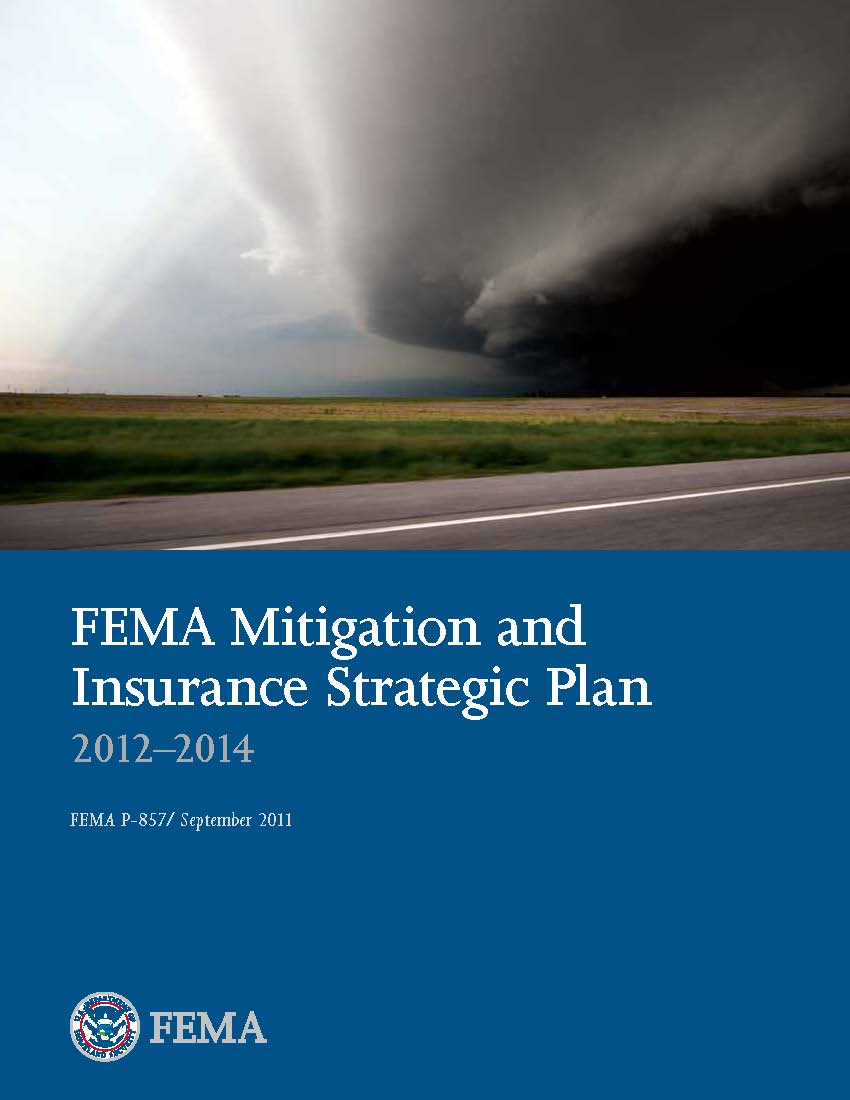- What is Mitigation?
- Risk Analysis
- Risk Reduction
- Flood Insurance
- Mitigation's Value to Society
- Mitigation Best Practices Portfolio
 Sign up for Mitigation Planning email updates
Sign up for Mitigation Planning email updates
What is Mitigation?
Mitigation is the effort to reduce loss of life and property by lessening the impact of disasters. This is achieved through risk analysis, which results in information that provides a foundation for mitigation activities that reduce risk, and flood insurance that protects financial investment.
FEMA’s Federal Insurance and Mitigation Administration (FIMA) manages the National Flood Insurance Program (NFIP) and implements a variety of programs authorized by Congress to reduce losses that may result from natural disasters. Effective Mitigation efforts can break the cycle of disaster damage, reconstruction, and repeated damage.
 2012-2014 FEMA Mitigation and Insurance Strategic Plan
2012-2014 FEMA Mitigation and Insurance Strategic Plan
(September 2011)
The FEMA Mitigation and Insurance Strategic Plan for 2012-2014 identifies critical goals, objectives, and strategies to enhance the way FEMA carries out its mitigation and insurance mission. The plan is designed to help build and sustain collaboration with Federal, State, tribal, Territorial, and community partners through a strategic framework that guides day-to-day work leading to stronger, more resilient communities nationwide.
Risk Analysis
Government agencies must understand the full impact of natural hazards using applied multi-hazard engineering science and advanced technology in order to effectively plan to reduce natural hazard effects.
Risk Reduction
The goal of risk reduction is to reduce the risk to life and property, which includes existing structures and future construction, in the pre and post-disaster environments. This is achieved through regulations, local ordinances, land use and building practices, and Mitigation projects that reduce or eliminate long-term risk from hazards and their effects.
Flood Insurance
The National Flood Insurance Program (NFIP) goal is to reduce the impact of flooding on private and public structures by providing affordable insurance for property owners. The program encourages communities to adopt and enforce floodplain management regulations, which will mitigate the effects of flooding on new and improved structures.
The NFIP is helping communities reduce the socio-economic impact of disasters by promoting the purchase and retention of both Risk Insurance and National Flood Insurance.
Mitigation's Value to Society
Mitigation is valuable to society in these ways:
-
It creates safer communities by reducing loss of life and property damage. For example, the rigorous building standards adopted by 20,000 communities across the country are saving the nation more than $1.1 billion a year in prevented flood damages.
-
It allows individuals to minimize post-flood disaster disruptions and recover more rapidly. For example, homes built to NFIP standards incur less damage from floods. And when floods do cause damages, flood insurance protects the homeowner’s investment, as it did for the more than 200,000 Gulf Coast residents who received more than $23 billion in payments following the 2005 hurricanes.
-
It lessens the financial impact on individuals, communities, and society as a whole. For example, a recent study by the Multi-hazard Mitigation Council shows that each dollar spent on mitigation saves society an average of four dollars.
Mitigation Best Practices Portfolio
FEMA's Best Practices Portfolio is a collection of ideas for activities, projects, and potential funding sources that can help reduce or prevent the impacts of disasters. By sharing your first-hand experience of damaged areas, you help spread the word of how important, effective, and life-saving mitigation can be. Stories that focus on successful mitigation projects and practices implemented after a disaster may encourage communities and individuals to implement new mitigation efforts to prevent future damages.
Download the Submission Worksheet to help you capture key elements to draft and submit new stories. Our goal is to find examples that highlight a variety of hazards, mitigation actions, funding sources, and Best Practice subjects. We encourage you to enhance your story by including up to two related website links and as many as six supporting files (e.g., photographs, documents, PDFs, maps).

